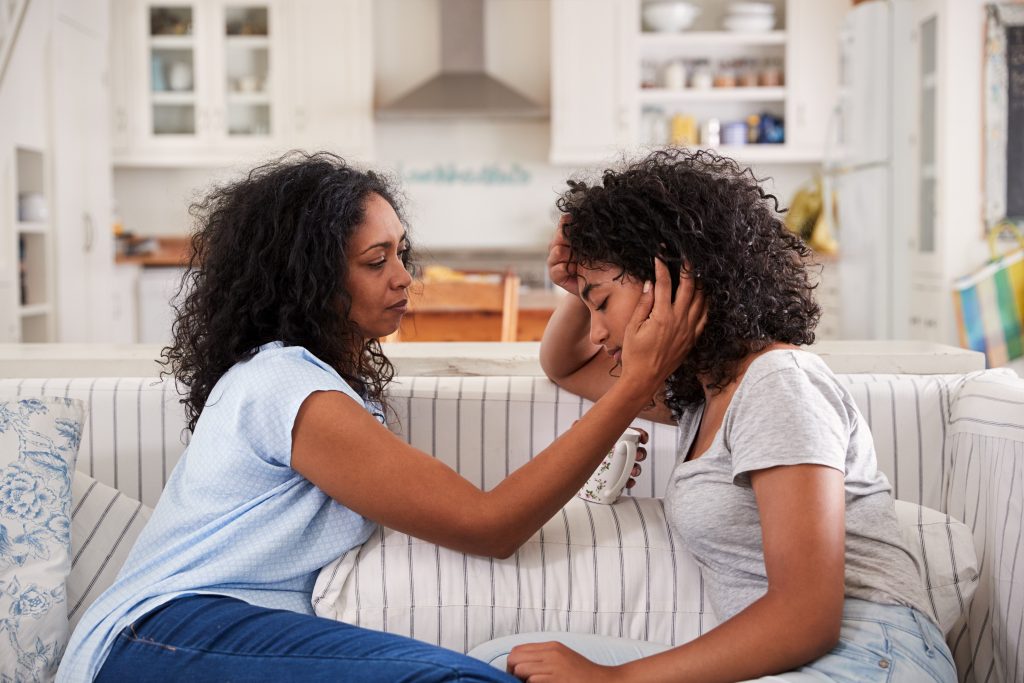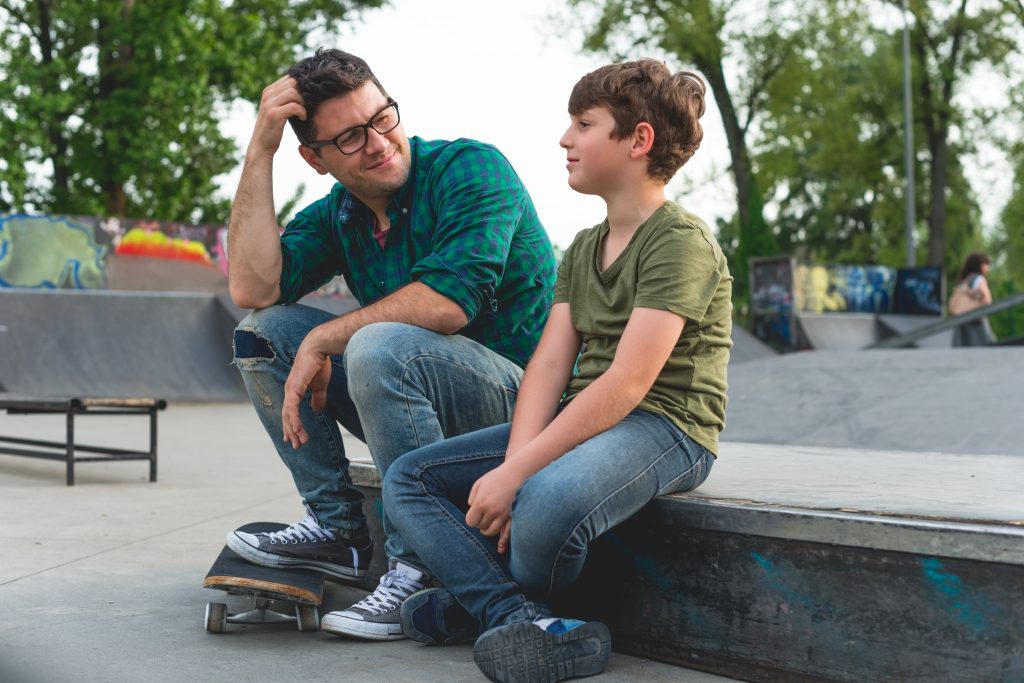It is a mistake not to recognize the impact divorce can have on children. But it is also a reality that ALL parents need to monitor their children for signs of depression whether or not a divorce is involved.
Depression among teens and children is on the rise. According to a recent study, major depressive episodes in teens have risen from 8.7% in 2005 to 11.3% in 2014.[1] Suicide is now the third most common cause of death among teens in this country.[2] Colorado’s teen suicide rate increased 58 percent from 2016 to 2019, with suicide now the cause of one in five adolescent deaths in Colorado.[3]
Depression rates are rising among preteens as well.[4] I have had several cases, some involving children as young as 12, who have been hospitalized for attempting suicide or suffering suicidal ideations during the course of the divorce process.
While experts have various opinions on whether depression increases among children in divorce, EVERYONE (including judges!) agrees that putting children and teens in the middle of the divorce controversy is harmful to them.
As a divorce attorney, I am NOT a mental health professional. However, I do see certain things in our firm’s cases that parents should and must keep in mind when it comes to the issue of depression in the case of divorcing families and families in general.
- Do NOT involve your children in the divorce dispute. Shield them from this controversy that causes a substantial amount of stress and anxiety. Do NOT ask them to pick sides. Do NOT ask them to disparage (put down) the other parent. Do NOT make a face, sigh or roll your eyes when your child speaks highly of the other parent. Body language speaks volumes.
- LISTEN without judgment to the child’s concerns and point of view. It is more effective than lecturing. While you may have to bite holes in your tongue, the listening allows them to talk more freely in a safe environment. Often, they will talk themselves out on a limb and then, realizing the foolishness of their position, and being quite shocked that you are not interrupting, begin arguing your side. It may be hard to believe, but active listening DOES work if you can bite your tongue long enough. As one of my friends put it, “If you dive in and criticize when they talk about the other parent, their friends or other things you need to know, they will stop sharing with you.”

- Take a mental health first aid class. There are classes across the state including a new teen mental health first aid program: http://www.mhfaco.org. I took the free mental health first aid class that Jefferson County Mental Health in Jefferson County offers and it was a real eye opener. I am glad I learned those skills.
- Get over the stigma. If we keep depression hidden in the closet, it continues to be a shameful topic instead of a nationwide problem that needs to be addressed. Mental health issues are not shameful. They are simply another health issue, and they are prevalent. Hiding the problem is not going to make it go away. That is one reason I am writing this blog. More teens die of suicide than cancer[5] and, quite frankly, the teens with cancer probably have depression too. It is high time we applaud teens who treat their depression and manage it instead of shoving them aside, denying them access to extracurricular programs and opportunities. That is simply unjustified bias that makes the problem worse by shaming those afflicted when they admit the issue and reach out for the help they need.
- Do NOT confuse depression with a mild case of the blues. Depression is a major mental health condition that may require therapy, medication or other outside help. You cannot reason with a person whose thinking is impaired by depression. You cannot tell a depressed person to “snap out of it.” If your child is suffering from severe depression, you may need to involve a professional.

- Watch for the signs of depression in your child. Signs of depression include:
– An unusually sad mood
– Loss of enjoyment
– Lack of energy
– Feelings of worthlessness or guilt
– Thoughts of death or wishing to be dead
– Difficulty concentrating or making decisions
– Flat affect
– Abuse of drugs or alcohol
– Sleeping difficulties or excessive sleeping
– Loss of interest in food or sudden weight gain
– Numbing behaviors like excessive video games or net surfing - Involve professionals. Even in the midst of a contentious divorce, a parent may get emergency assistance for a child at risk. This could mean calling 911 or making an emergency hospitalization if a child has suicidal ideations, for example. Routine daily decisions may be made as well when the child is with you – things like recommending they talk to a teacher or engage in an exercise plan, etc. Follow your parenting plan and court orders. Consult with and inform the other parent. But above all, SAFETY FIRST. Any time you think your child’s welfare is at risk, in addition to getting the IMMEDIATE professional help needed, you can call my cell at 303-808-4794 for a free consult on the legal options, including putting the case on hold (by agreement) or getting a court order for therapy.
- Follow the mental health first aid action plan for depression: ALGEE. Assess for risk of suicide or harm, Listen nonjudgmentally, Give reassurance and information, Encourage appropriate professional help, Encourage self-help and other support strategies. #BeTheDifference
- Be a Snoop. If you have a teen or child living in your house, you have every right to know what is in their room. Not only are teens geniuses at hiding things, but a depressed teen suffers from a manipulative mental condition that may cause them to engage in self harm. I am NOT talking about hacking into computers or reading private journals. I AM talking about examining the room of a teen or preteen under your responsibility in your own home for drugs, alcohol, guns, knives, weapons, ropes, and implements for suicide. Sadly, I received this tip from a bereaved father who had not done this and wished he had.

- Get involved. You can learn a lot about your child by volunteering at school or in activities. I cannot believe how much I have learned simply by driving carpool – kids seem to forget you are in the car and can hear them. Teachers and coaches see another version of your child and you may need to see the whole picture. Having mentored a student from the amazing STEM school in Littleton, site of a recent school shooting, I asked her what I can do to help that school. She said, volunteer. So get involved. Schools need us.
- Take a deep breath. None of us can helicopter our children out of harm’s way. Life is tough, and our kids do not live in a bubble. I grew up in the generation where parents chain smoked and drank cocktails after work, stuck us in playpens then later told us to go outside and come home when it gets dark. We tried to do better. Now my generation is accused of raising a bunch of snowflakes who get participation trophies and want the whole world to know how special they are. You can’t win! As one friend put it, “It is like they stamp ‘guilt’ on your forehead when you become a mother.” Same goes for fathers, I imagine. At the end of the day, most kids will be OK, and most kids of divorce will be OK too. Do what you can is all I am asking. We cannot save every child but we can continue to try. We must.
- Trauma affects children of divorce. Sometimes, perhaps even despite the parents’ best efforts, children of divorce undergo trauma. This could include domestic violence, their own violent impulses, or witnessing criminal activity. This could trigger a depressive episode and at minimum necessitates professional involvement. Of course, shielding children from trauma is always best, but if it does not happen, it should be recognized and addressed.
I wish I did not have to write a blog about depression in children of divorce. I wish we did not live in a world where teens and children suffer as much as they do. But we do live in a world where more than one in 10 teens suffer from depression, and you need to be aware. Often — more often than I care to recount — it could be a matter of life and death.
Note: This article is for informational purposes only and is not intended to provide medical or psychiatric advice or recommendations, or diagnostic or treatment opinion. If you suspect a medical or psychiatric condition, please consult a health care provider. All decisions regarding an individual’s care must be made in consultation with their health care provider, considering the individual’s unique condition. If you or someone you know is struggling, please contact the 24×7, confidential National Hotline at 1-800-273-8255 or use the crisis text line by texting HOME to 741741 in the U.S., or go to www.suicide.org/international-suicide-hotlines.html for the suicide hotline number for your country.
[1] Lifetime prevalence of mental disorders in U.S. adolescents: results from the National Comorbidity Survey Replication–Adolescent Supplement (NCS-A). J Am Acad Child Adolesc Psychiatry. 2010;49(10):980–989pmid:2085504 as cited in https://pediatrics.aappublications.org/content/early/2016/11/10/peds.2016-1878#ref-1
[2] Miniño AM. Mortality among teenagers aged 12-19 years: United States, 1999-2006. NCHS data brief, no 37. Hyattsville, MD: National Center for Health Statistics. https://www.cdc.gov/nchs/products/databriefs/db37.htm#:~:targetText=Accidents%20(unintentional%20injuries)%2C%20homicide%2C%20suicide%2C%20cancer%2C,of%20all%20deaths%20to%20teenagers.
[3] https://www.cpr.org/2019/09/17/the-rate-of-teen-suicide-in-colorado-increased-by-58-percent-in-3-years-making-it-the-cause-of-1-in-5-adolescent-deaths/
[4] https://adaa.org/learn-from-us/from-the-experts/blog-posts/consumer/childhood-depression
[5] Miniño AM. Mortality among teenagers aged 12-19 years: United States, 1999-2006. NCHS data brief, no 37. Hyattsville, MD: National Center for Health Statistics. https://www.cdc.gov/nchs/products/databriefs/db37.htm#:~:targetText=Accidents%20(unintentional%20injuries)%2C%20homicide%2C%20suicide%2C%20cancer%2C,of%20all%20deaths%20to%20teenagers.
